| HOME |
|---|
CETUS
The Sea Monster
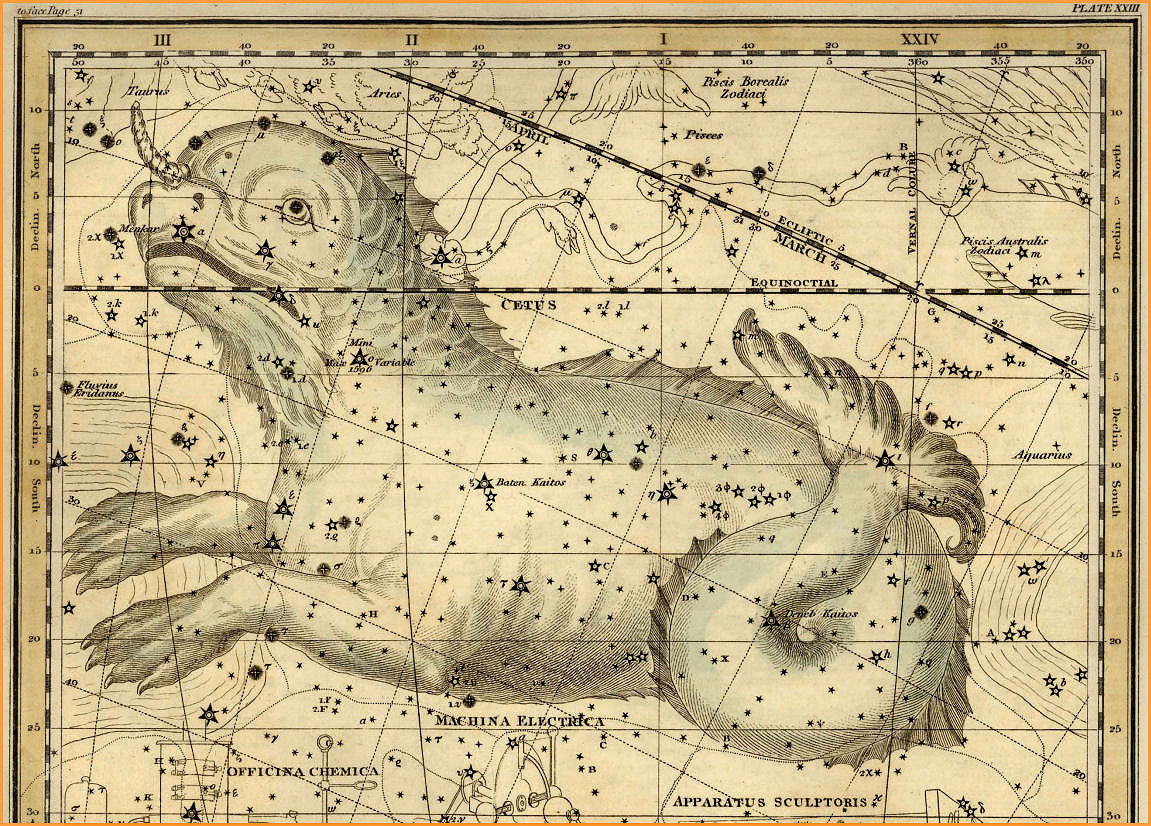
Cetus - Celestial Atlas by Alexander Jamieson - 1822
| HOME |
|---|

Like a vision of the Loch Ness Monster, Cetus rises up out of the southern horizon. It is the sea monster of the epic tale of Andromeda, sent by Neptune to devour the unfortunate princess, and atone for the sins of her mother, the queen Cassiopeia. Cetus is a large constellation, low on the southern horizon for most northern latitudes, and like most monsters, it lurks in the shadows. Its shape is indistinct, and you have to look hard to see it.
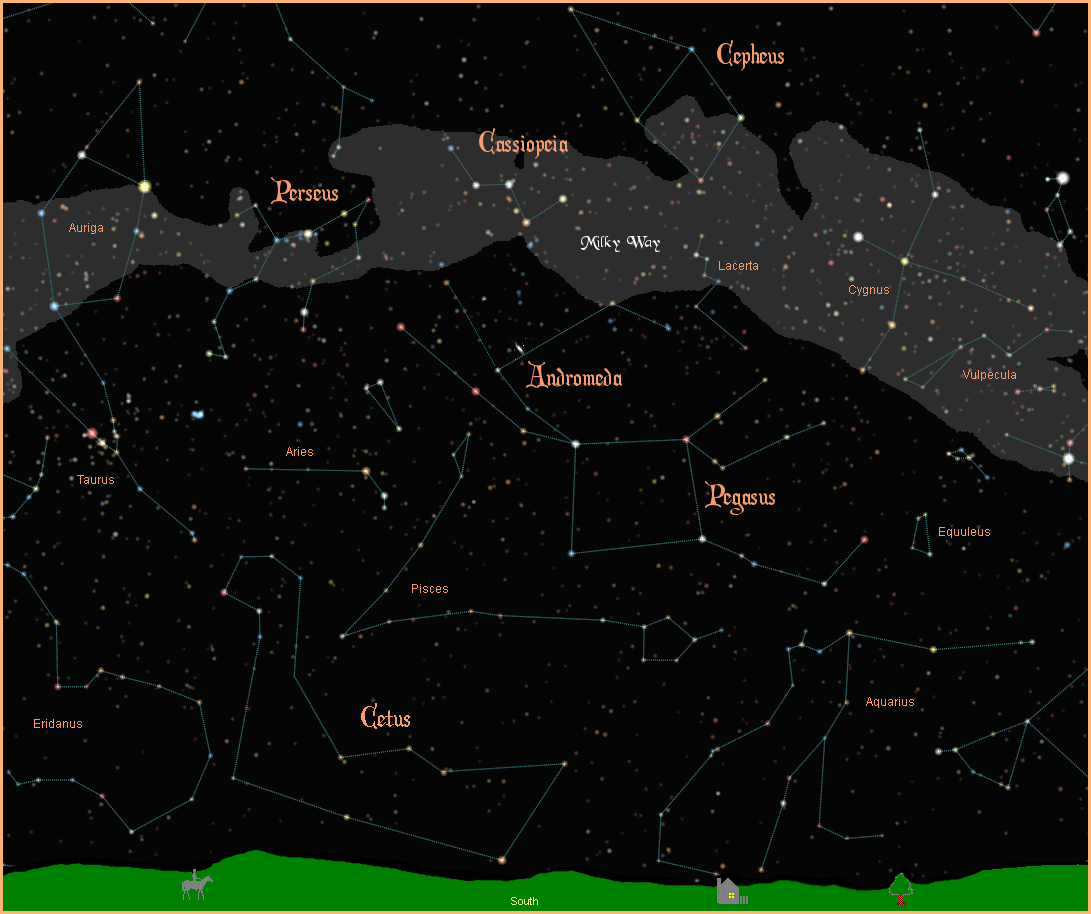
Alpha Ceti is named Menkar, from the Arabic for nose, although it's closer to the mouth of the beast. With a magnitude of 2.54 it is the second brightest star in the constellation, although there is evidence that it has dimmed since ancient times and once was the luminary (brightest star). It is an M1III red giant, a star in the last stages of its life, 250 light years away.
Beta Ceti is the brightest star in the constellation, at a magnitude of 2.04. On most star charts it retains the ancient Arabic name of Diphda, meaning the second frog. The first frog was the bright star Fomalhaut to the southwest, which preceded it across the sky. Being the only really bright stars in the region, early Arabs saw them as two frogs hopping across the sky. Beta Ceti is also called Deneb Kaitos, the whale's tail, being one of three stars that mark the tail of the beast. It is a K0III yellow-orange giant, 96 light years away.
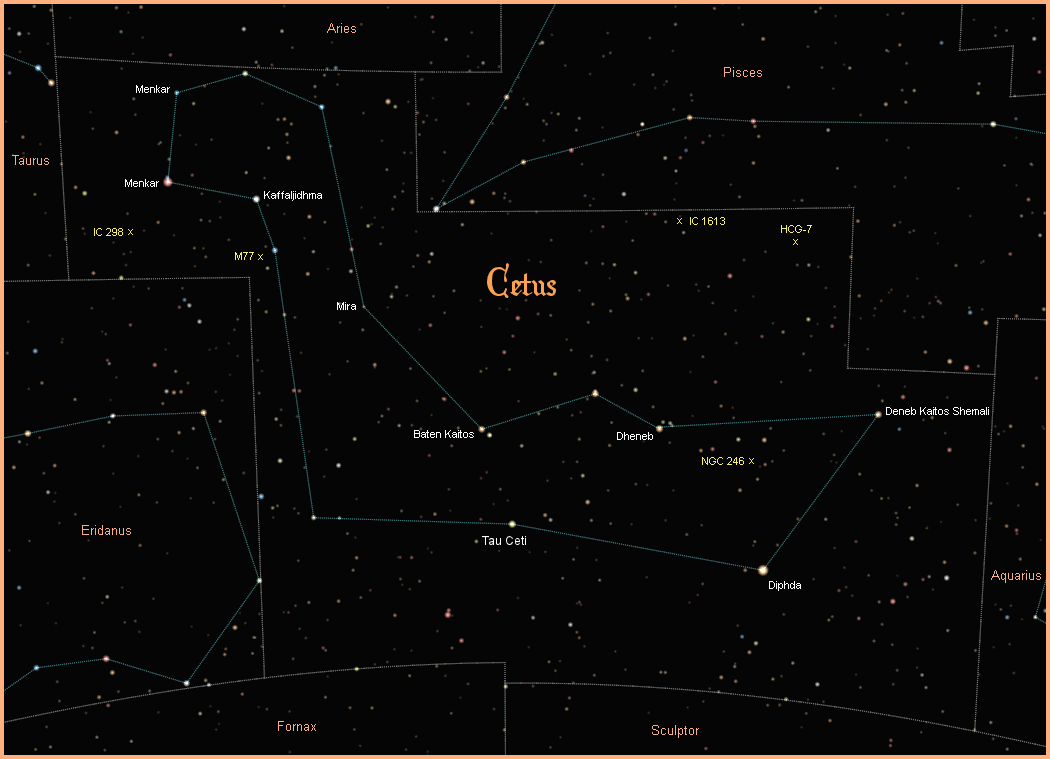
Gamma Ceti is named Kaffaljidhma. Its name is traced back through ancient Arabic lore as meaning part of the hand, referring to the circlet of stars that now mark the sea monster's head. It is an A3V white main-sequence star, 82 light years away with a magnitude of 3.56.
Zeta Ceti is Baten Kaitos, Arabic for the belly of the whale. It is a K0III orange giant, 260 light years away with a magnitude of 3.7. It appears to have a faint companion, about which little is known.
Eta Ceti is Dheneb for tail, as it marks the beginning of the monster's tail. It is a K0III orange giant, with a magnitude of 3.46, about 124 light years away.
Iota Ceti is Deneb Kaitos Shemali Arabic for the northern whale's tail. It is another K1III orange giant with a possible faint companion. It is 275 light years away with a magnitude of 3.56.
Tau Ceti is unnamed, which is no small irony considering its ubiquitous presence in science fiction. A quick look reveals no less than 24 authors that make use of this star in their works, including the grand masters Isaac Asimov, Arthur C. Clark and Robert Heinlen. The Star Trek franchise mentions Tau Ceti often in both television and film. Even the 1968 classic Barbarella staged Jane Fonda's erotic adventures on the "planet" of Tau Ceti.
The main reason for this star's popularity is that it is very close - only 11.9 light years away, making it the 8th closest naked eye star to Earth, and the 22nd overall. It is also very similar to our Sun, which makes it a prime candidate for nurturing the evolution of life. In a case of life imitating art, in December, 2012, evidence was presented of a five planet solar system of terrestrial type planets around Tau Ceti, and scientists all over the world are presently working feverishly to confirm (or not) the existence of these planets. Tau Ceti is a G8V yellow main sequence star, slightly cooler than our Sun, and with a magnitude of 3.49, it is easily spotted with the naked eye under the belly of the mythical beast, Cetus.
Omicron Ceti is the star Mira (pronounced my-rah), Latin for wonderful, and it has been closely studied as a dramatically variable star for over 400 years. It is an M5III red giant, and over the course of approximately 331 days, Mira goes from a very dim magnitude 9 (invisible to the naked eye), all the way to a brilliant magnitude 2 (making it one of the brightest stars in the sky), and back again. And in August, 2007, when NASA turned one of its ultraviolet telescopes in the star's direction, they discovered something previously unknown. The star has a tail, similar to a comet, except of course very much larger and longer. Mira's tail extends 13 light years across space, a distance many thousands of times greater than our entire solar system.
Mira is an unusual star in more ways than one. Instead of following the rest of the stars in our galaxy in a long, slow circle around the galaxy's centre, Mira is a "runaway" star, speeding along at right angles to the disk of the galaxy at a breakneck speed of 291,000 miles per hour. Below is NASA's ultraviolet image of Mira (moving left to right) and its spectacular tail.

Excluding the as yet unconfirmed planets around Tau Ceti mentioned above, there are no less than 21 other stars in Cetus with confirmed planetary systems. With one or two possible exceptions (on a really dark night), the stars are all too faint to see, and all the planets so far are gas giants. For more information on these and other extrasolar planets, visit NASA's New Worlds Atlas, and The Open Exoplanets Catalogue.
NGC 246, known also as the Skull Nebula, is a bubble of material expelled by the dying white dwarf star at its centre. It has a magnitude of 8.0, and is about 1,600 light years away.
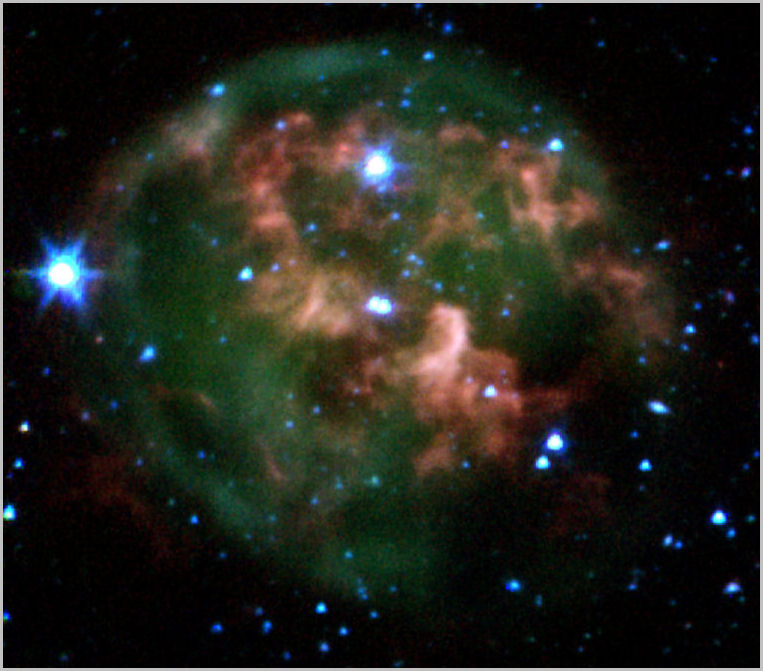
Moving outside our galaxy, we find IC 1613, an irregular dwarf galaxy 2.3 million light years away, a member of the Local Group of galaxies, to which our own Milky Way belongs. With an overall magnitude of 9.2, it is a challenge for a small scope.
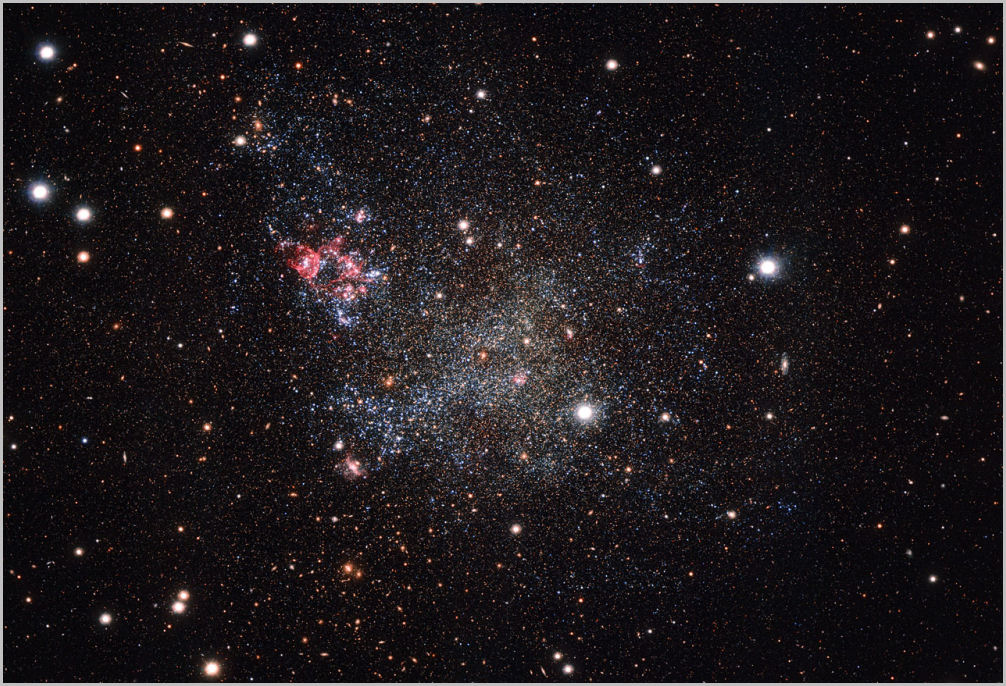
M77 is a big, bright, barred spiral galaxy that presents itself more or less face-on, making it a good target for a small telescope. It has a magnitude of 8.9, and is about 47 million light years away. Its diameter is estimated at 170,000 light years, compared to our Milky Way at 100,000 light years. M77 has long been considered the prototype of a Seyfert Galaxy, a class of Active Galaxy with a central core emitting as much energy and luminosity as the combined light of all the other stars in the galaxy combined. X-ray studies in 2015 revealed the galaxy as a Quasar source, one of the most powerful known energy sources in the Universe.
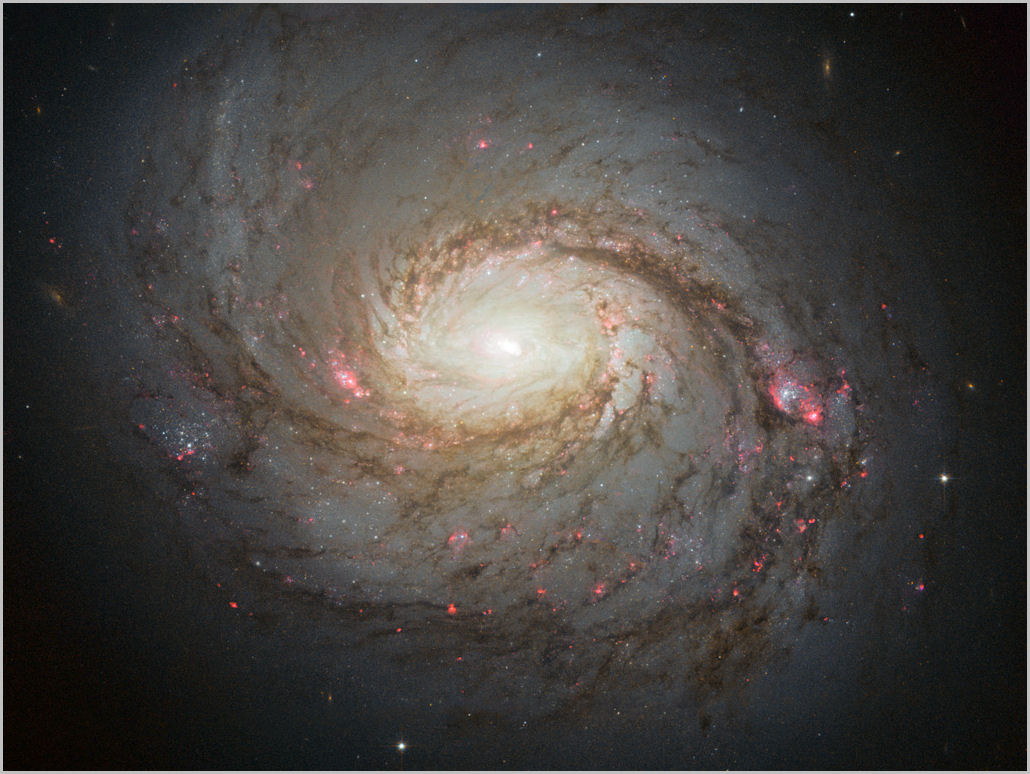
The Hickson Compact Group 7 (HCG-7) is a small group of four galaxies located about 200 million light years away. The Hubble image below shows the large spiral galaxy NGC 192 (magnitude 13.0) in the bottom left, the blue tinted spiral NGC 197 (magnitude 13.7) in the top centre, and the bright lenticular galaxy NGC 196 (magnitude 13.6) in the top right corner. The fourth galaxy, NGC 201 is out of the frame.
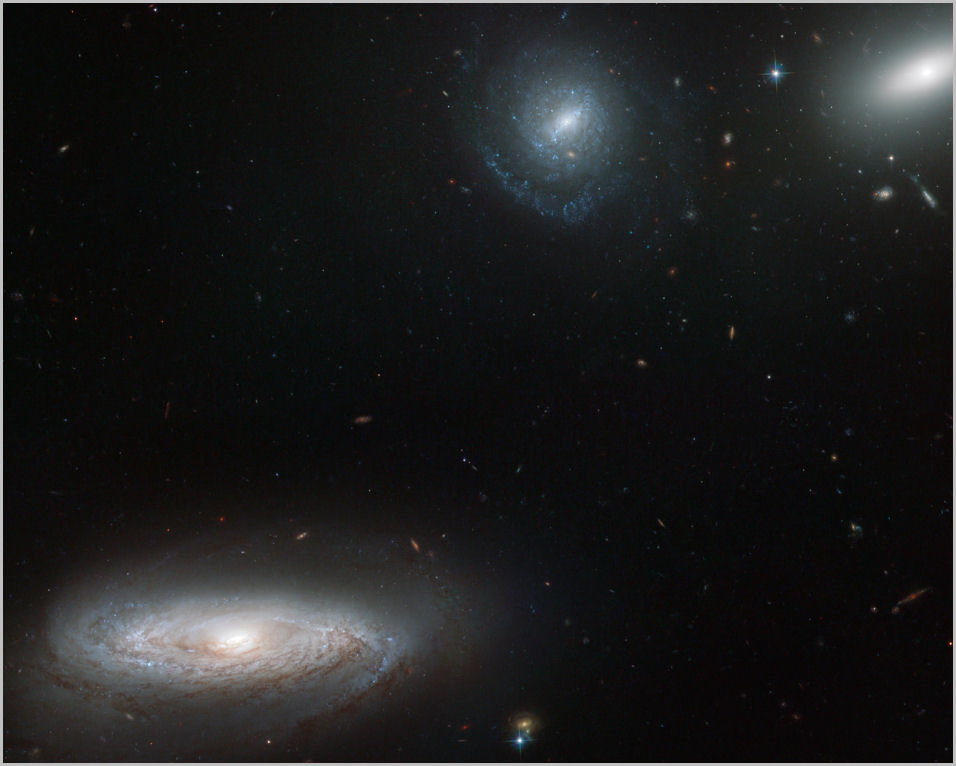
Below is the large spiral galaxy NGC 201, the fourth member of HCG 7, magnitude 13.6.
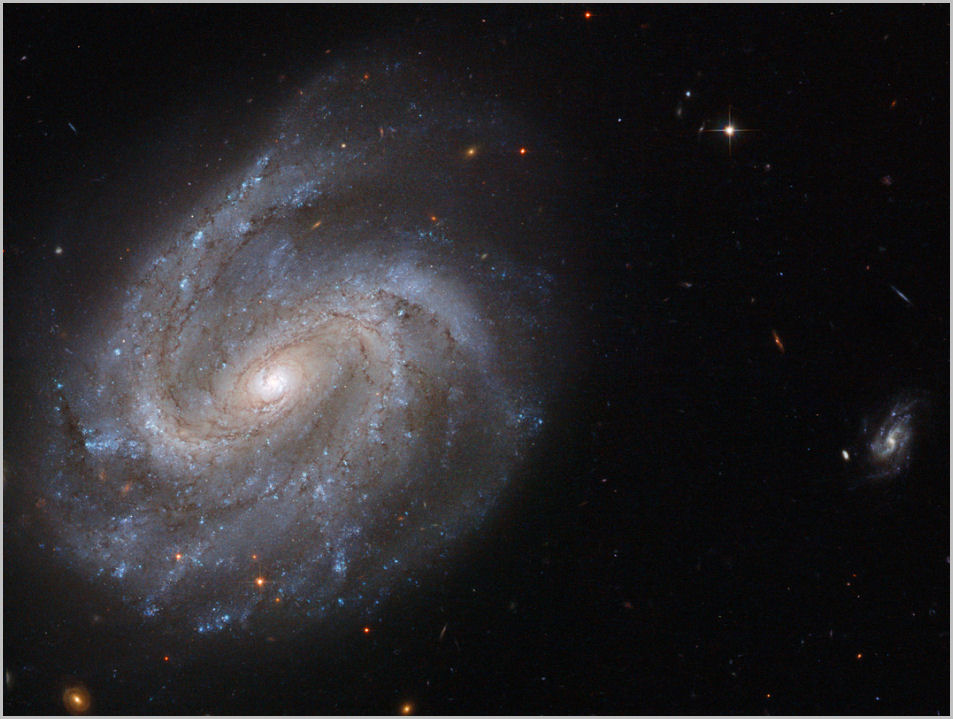
Arp 147 (IC 298) is a pair of interacting ring galaxies about 400 million light years away. While the galaxy on the left appears relatively unscathed from their encounter, the galaxy on the right is clearly in great turmoil. A magnitude of 14.3 puts the pair out of reach of most backyard scopes.
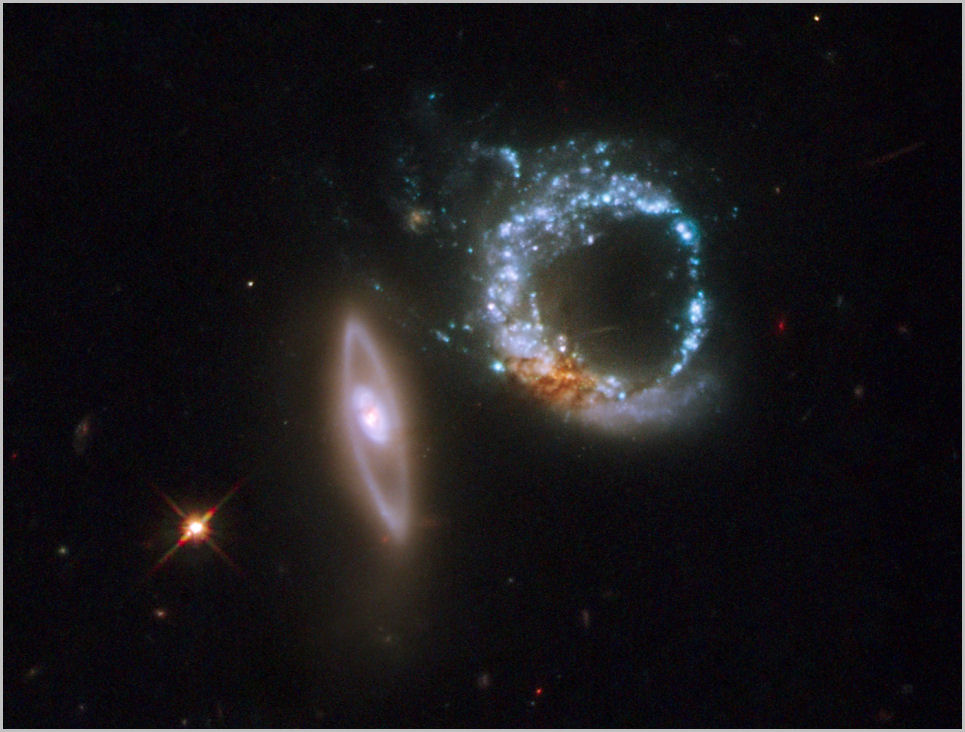
|
|
|
|
|
|